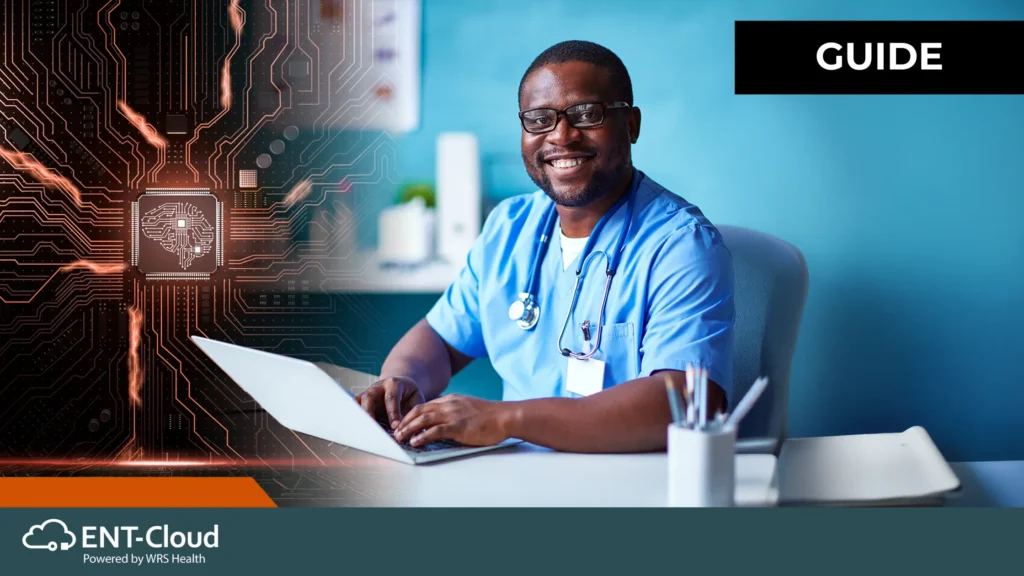Key Takeaways
- ENT diagnosis codes are essential for accurate claims and faster reimbursement.
- Understanding ENT CPT codes reduces denials and supports proper documentation.
- Match diagnosis codes with the right procedures for otolaryngology billing success.
- Learn how to prevent allowable mismatch with our comprehensive guide.
For ENT practices, coding errors can mean more than just administrative hassle—they mean lost revenue. And in a specialty that spans everything from sinusitis to sleep apnea surgeries, the margin for error is high.
ENT diagnosis codes (ICD-10) and ENT CPT codes work together to paint a full picture of the patient’s condition and the care you provide. But without the correct pairing or documentation, payers can reject claims—even when the services are clearly necessary.
To help your practice code more confidently, we’ve compiled a list of the top 30 diagnosis and procedure codes used in otolaryngology, including notes on usage and billing pitfalls.
Table of Contents
Common ENT Diagnosis Codes
These ICD-10 codes represent the most frequently reported conditions in otolaryngology. Use them to justify the necessity of services provided. These diagnoses are often used to support high-volume outpatient procedures, imaging orders, or referrals. Accuracy in selecting the right code helps avoid denials tied to “medical necessity not met.”
- J01.90 – Acute sinusitis, unspecified: Used for sudden-onset sinus infections without confirmed bacterial or viral cause. Often paired with office visits and nasal endoscopy.
- J31.0 – Chronic rhinitis: Applies to long-term nasal inflammation; frequently seen in allergy cases and may support use of antihistamines or immunotherapy.
- J32.9 – Chronic sinusitis, unspecified: This diagnosis is linked to many procedures including CT imaging and functional endoscopic sinus surgery (FESS).
- J34.2 – Deviated nasal septum: Often associated with breathing difficulties or nasal obstruction; supports septoplasty procedures.
- R09.81 – Nasal congestion: Common presenting symptom used when diagnosis has not yet been determined.
- J03.90 – Acute tonsillitis, unspecified: Typically reported for sore throat cases; may support antibiotics or referral for tonsillectomy.
- J35.01 – Chronic tonsillitis: Used when repeated episodes justify surgical intervention.
- J35.3 – Hypertrophy of tonsils with adenoids: Supports procedures like adenotonsillectomy, especially in pediatric patients.
- R06.5 – Mouth breathing: May be secondary to enlarged adenoids or nasal obstruction.
- J34.89 – Other specified disorders of nose and nasal sinuses: Covers conditions not listed elsewhere, like nasal polyps.
ENT CPT Codes for In-Office Procedures
These are the most commonly billed procedures done in a clinic setting. Always link them to a medically necessary diagnosis code. These in-office services may require the use of modifiers. Payers are increasingly strict about documentation supporting separate and distinct services. Make sure your notes clearly differentiate the exam and procedure.
- 31231 – Nasal endoscopy, diagnostic, unilateral or bilateral: Essential for visualizing internal nasal structures. Must be supported with symptoms like obstruction or sinusitis.
- 31575 – Flexible laryngoscopy: Used to visualize the larynx for voice changes, dysphagia, or mass evaluation.
- 69210 – Cerumen removal (impacted): Billable only when earwax is impacted and removal requires instrumentation—not suction or irrigation alone.
- 92511 – Nasopharyngoscopy with endoscope: Used for evaluating the nasal passages, pharynx, and airway in patients with breathing or voice issues.
- 92610 – Evaluation of swallowing function: Often paired with complaints of dysphagia or history of stroke.
- 30930 – Fracture nasal hemorrhage control (cauterization, any method): Used when epistaxis (nosebleed) is controlled using chemical or electric cautery.
- 31500 – Intubation, emergency procedure: Applicable in trauma or airway obstruction cases, especially in hospital settings.
ENT Surgical CPT Codes
These high-value otolaryngology CPT codes are typically used for procedures in surgical centers or hospitals. These procedures often fall under global surgical packages. They require careful billing of pre-op, intra-op, and post-op components. Make sure that your billing system tracks global periods and applies appropriate modifiers.
- 30140 – Submucous resection of inferior turbinate: Often done with septoplasty for nasal obstruction.
- 30520 – Septoplasty or submucous resection of nasal septum: Frequently used alongside procedures for deviated septum.
- 31255 – Endoscopic ethmoidectomy, total (bilateral): Performed to treat chronic sinusitis or nasal polyps.
- 42820 – Tonsillectomy and adenoidectomy under age 12: Supports chronic tonsillitis, sleep apnea, or airway obstruction in pediatric patients.
- 42826 – Tonsillectomy, age 12 or over: Typically tied to chronic sore throats or peritonsillar abscesses.
- 30115 – Excision of nasal polyp(s): Used in cases of chronic nasal blockage due to polyps.
- 30465 – Repair of nasal vestibular stenosis (e.g., alar collapse): Corrects structural nasal airway narrowing.
Audiology and Vestibular Codes
Many ENT practices include audiology and balance testing. These CPT codes help capture that care. Billing for audiology services often involves linking multiple procedures in a single visit. Be aware of payer rules around bundling and frequency limits. For example, hearing tests may be denied if performed too frequently without clear justification.
- 92557 – Comprehensive audiometry threshold evaluation and speech recognition: Used for full hearing exams, often required for hearing aid candidacy.
- 92567 – Tympanometry: Evaluates middle ear pressure and function; useful in patients with recurrent otitis media.
- 92541 – Spontaneous nystagmus test (with recording): Assesses balance and vestibular function.
- 92552 – Pure tone audiometry (air only): Simpler alternative to comprehensive audiometry, for basic hearing screens.
- 92585 – Auditory evoked potentials, comprehensive: Used in more complex diagnostic situations like newborn hearing screening or neurologic evaluations.
Documentation Tips to Support ENT CPT Codes
Correct coding isn’t enough. Documentation must match CPT code definitions exactly, especially for endoscopy and scope procedures. Clearly note technique (rigid vs. flexible), laterality, anesthesia, and findings. Incomplete documentation is a top reason for ENT claim denials and recoupments. Here’s how to reduce denials:
- Link each CPT to a clear diagnosis code: Make sure the ENT diagnosis codes used support the medical necessity of the procedure.
- Include laterality: For bilateral procedures, specify both sides and use appropriate modifiers (e.g., LT, RT, 50).
- Capture scope, technique, and findings: Detail the procedure steps, instruments used, and results.
- Mention anesthesia and follow-up: Especially for surgeries, include what type of sedation was used and any recovery protocols.
ENT Coding Scenarios That Cause Confusion
Even experienced coders get tripped up by edge cases. These scenarios frequently lead to underbilling or denials. Be especially cautious with bundled codes and global periods. Here’s how to avoid common issues:
- Multiple procedures in one visit: Use modifier 51 to indicate multiple procedures done in a single session. Be sure to document why each was necessary.
- Cerumen removal vs. ear exam: Don’t bill 69210 unless the earwax was truly impacted and required tools to remove.
- Tonsillectomy with sleep apnea: Code both the procedure (42820) and diagnosis (G47.33 for obstructive sleep apnea) but avoid global bundling errors.
Need a billing service that gets you paid right the first time, every time? Schedule a demo with our team.
3 Best Practices for ENT Billing Success
A solid coding foundation means fewer denials and faster reimbursements. Here’s what to focus on:
Know Your ENT Diagnosis Codes
Stay current with ICD-10 changes. Many codes get updated or revised annually, especially those related to respiratory or allergy symptoms. Keeping your diagnosis codes up to date reduces denials and ensures your documentation stays aligned with current payer criteria.
Use Modifiers Correctly
- Modifier 25 – Significant E/M on the same day as a procedure
- Modifier 59 – Distinct procedural service
- Modifier 50 – Bilateral procedure
- Modifier LT/RT – Left or right side, when applicable
Modifiers must be fully supported in documentation. Incorrect modifier use is a top reason for ENT claim rejections.
Audit Claims Regularly
Routine internal audits help spot missed codes, incorrect modifiers, or documentation gaps before payers do.

Stay Current, Bill Confidently
ENT coding can be complex—but with the right tools and knowledge, your practice can bill confidently and get paid faster. Bookmark this guide, share it with your billing team, and revisit it whenever coding questions arise.
FAQs: ENT Diagnosis and CPT Codes
Can I bill an E/M visit with a nasal endoscopy?
Yes, but only if the visit involved a separately identifiable service—use Modifier 25. Make sure the documentation clearly differentiates between the evaluation and the procedure.
What’s the difference between 42820 and 42821?
42820 is for patients under 12; 42821 is for those over 12 with more complex anatomy or recovery needs.
How do I code for chronic sinusitis requiring surgery?
Pair J32.9 (chronic sinusitis) with 31255 (total ethmoidectomy), and include any additional codes for related procedures like septoplasty or polypectomy.











